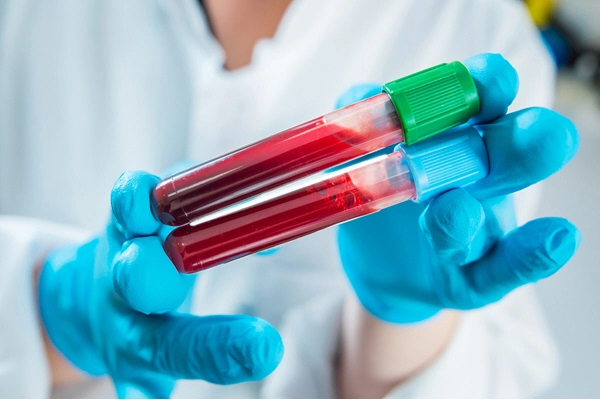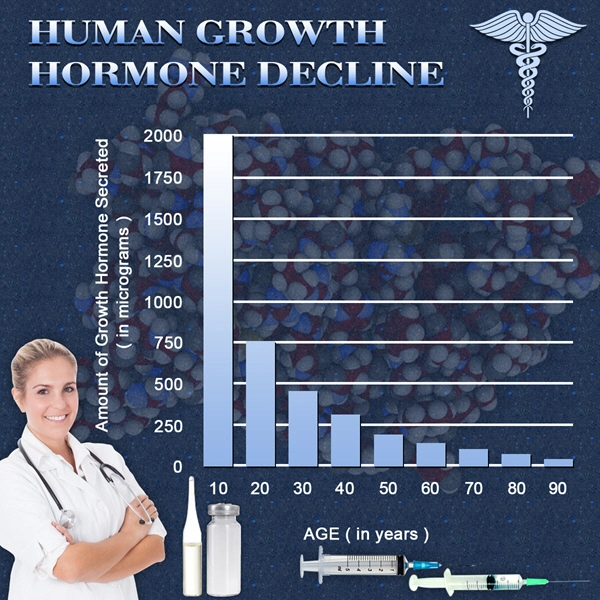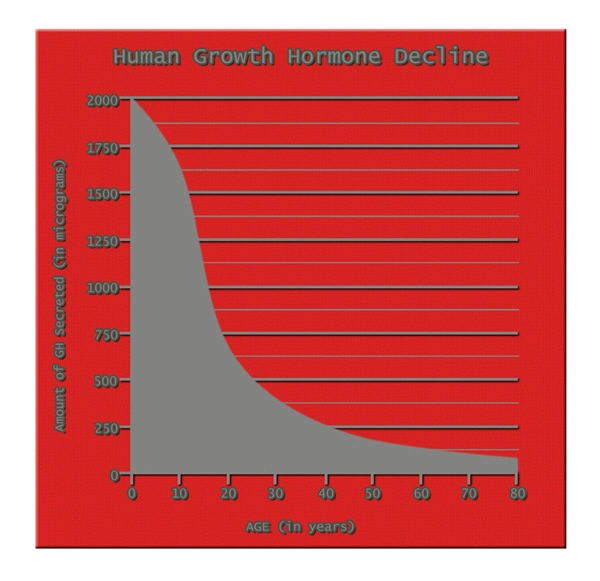Introduction
The pursuit of physical perfection and enhanced athletic performance has led many American males to explore various avenues, including the use of performance-enhancing drugs (PEDs). This article delves into the prevalence and attitudes towards PEDs among male bodybuilders in the United States, based on recent survey data. The implications of these findings are critical for health professionals, policymakers, and the bodybuilding community.
Prevalence of PED Use Among American Male Bodybuilders
Recent surveys indicate a significant prevalence of PED use among American male bodybuilders. Approximately 25% of competitive bodybuilders and 15% of non-competitive enthusiasts report using anabolic steroids, human growth hormone, or other performance-enhancing substances. This trend is particularly pronounced among younger males, with usage rates climbing to 30% in the 18-25 age demographic. The accessibility of these drugs, often through illicit online markets or unscrupulous fitness centers, has contributed to their widespread use.
Attitudes Towards Performance-Enhancing Drugs
The attitudes towards PEDs among American male bodybuilders are complex and multifaceted. A significant portion of users view these substances as essential tools for achieving their physical goals, often citing the competitive nature of bodybuilding as a justification. Approximately 60% of users believe that PEDs are necessary to remain competitive, while 40% of non-users express concerns about the health risks and ethical implications of their use.
Interestingly, there is a growing acceptance of PEDs within certain segments of the bodybuilding community. About 50% of respondents, including both users and non-users, believe that the use of these substances should be legalized and regulated to ensure safety. This shift in attitude reflects a broader cultural acceptance of performance enhancement, albeit with a call for more responsible usage.
Health Risks and Consequences
The health risks associated with PED use cannot be overstated. Anabolic steroids, for instance, can lead to a range of adverse effects, including cardiovascular disease, liver damage, and hormonal imbalances. Survey data reveal that while 70% of users are aware of these risks, only 30% report taking measures to mitigate them, such as regular medical check-ups or using harm-reduction strategies.
The long-term consequences of PED use are particularly concerning. Approximately 20% of long-term users report experiencing severe health issues, ranging from heart attacks to chronic kidney disease. These findings underscore the urgent need for education and intervention programs aimed at reducing the prevalence of PED use among American male bodybuilders.
Regulatory and Policy Implications
The survey data highlight the need for more robust regulatory frameworks to address the use of PEDs in bodybuilding. Current laws, which primarily focus on the criminalization of steroid distribution, have proven ineffective in curbing their use. Instead, there is a growing consensus among experts that a harm-reduction approach, coupled with education and regulation, could be more effective.
Policy recommendations include the establishment of a national registry for PED users, similar to those used for other controlled substances, to monitor usage patterns and health outcomes. Additionally, increased funding for research into safer alternatives to PEDs could provide bodybuilders with healthier options to achieve their goals.
Conclusion
The use of performance-enhancing drugs among American male bodybuilders is a complex issue that requires a multifaceted approach. While the prevalence of PED use remains high, attitudes towards these substances are evolving, with a growing call for regulation and harm reduction. Health professionals and policymakers must work together to address the health risks and ethical concerns associated with PED use, ensuring that the pursuit of physical excellence does not come at the cost of long-term health.

- Maximizing Longevity Through Bodybuilding: Insights from Geriatric Medicine for American Males [Last Updated On: March 1st, 2025] [Originally Added On: March 1st, 2025]
- Approaching Mental Wellness Through Physical Strength: Insights into Body Building as Therapeutic Intervention [Last Updated On: March 2nd, 2025] [Originally Added On: March 2nd, 2025]
- Enhancing Bodybuilding Performance and Injury Prevention: The Critical Role of Physical Therapy [Last Updated On: March 3rd, 2025] [Originally Added On: March 3rd, 2025]
- Essential Nutritional Strategies for Effective Bodybuilding [Last Updated On: March 4th, 2025] [Originally Added On: March 4th, 2025]
- Exploring the Synergy Between Bodybuilding and Diabetes Management in American Males [Last Updated On: March 4th, 2025] [Originally Added On: March 4th, 2025]
- Exploring Bodybuilding: Effects on Muscle, Fat, and Bone Health [Last Updated On: March 5th, 2025] [Originally Added On: March 5th, 2025]
- Strength Training's Role in Enhancing Cardiovascular Health Among American Men [Last Updated On: March 6th, 2025] [Originally Added On: March 6th, 2025]
- Orthopedic Health Strategies for American Male Bodybuilders: Prevention, Nutrition, and Rehabilitation [Last Updated On: March 7th, 2025] [Originally Added On: March 7th, 2025]
- The Dangers of Anabolic Steroid Use: Health Risks and Safe Practices for Bodybuilders [Last Updated On: March 8th, 2025] [Originally Added On: March 8th, 2025]
- Optimizing Hormonal Dynamics in Bodybuilding: Key Strategies for Health and Performance [Last Updated On: March 9th, 2025] [Originally Added On: March 9th, 2025]
- Exploring the Psychological Benefits of Bodybuilding for American Males [Last Updated On: March 12th, 2025] [Originally Added On: March 12th, 2025]
- Bodybuilding: A Holistic Strategy to Combat Obesity and Enhance Metabolic Health in Males [Last Updated On: March 13th, 2025] [Originally Added On: March 13th, 2025]
- The Impact of Bodybuilding on Sleep: Patterns and Quality in American Males [Last Updated On: March 13th, 2025] [Originally Added On: March 13th, 2025]
- Harnessing the Power of Bodybuilding to Alleviate Chronic Pain in American Males [Last Updated On: March 15th, 2025] [Originally Added On: March 15th, 2025]
- Health Risks in Competitive Bodybuilding: Steroids, Organ Damage, and Mental Health [Last Updated On: March 17th, 2025] [Originally Added On: March 17th, 2025]
- Post-Surgery Rehabilitation Enhanced by Bodybuilding for American Males: A Comprehensive Guide [Last Updated On: March 18th, 2025] [Originally Added On: March 18th, 2025]
- Injury Prevention Strategies for American Male Bodybuilders: Techniques and Recovery [Last Updated On: March 18th, 2025] [Originally Added On: March 18th, 2025]
- Bodybuilding's Role in Addiction Recovery: Psychological and Physiological Benefits for American Males [Last Updated On: March 18th, 2025] [Originally Added On: March 18th, 2025]
- Bodybuilding: A Strategic Approach to Managing Hypertension in American Men [Last Updated On: March 19th, 2025] [Originally Added On: March 19th, 2025]
- Bodybuilding's Impact on Endocrine System: Hormonal Fluctuations and Health Risks in American Males [Last Updated On: March 19th, 2025] [Originally Added On: March 19th, 2025]
- Body Building as a Therapeutic Strategy for Osteoporosis in American Males [Last Updated On: March 20th, 2025] [Originally Added On: March 20th, 2025]
- Body Building: Dispelling Myths and Embracing Medical Facts for American Males [Last Updated On: March 20th, 2025] [Originally Added On: March 20th, 2025]
- Bodybuilding Boosts Immune Health in American Males: A Comprehensive Guide [Last Updated On: March 20th, 2025] [Originally Added On: March 20th, 2025]
- Bodybuilding and Kidney Health: Safe Practices for American Males [Last Updated On: March 21st, 2025] [Originally Added On: March 21st, 2025]
- Bodybuilding and Lifestyle Diseases: A Holistic Approach for American Males [Last Updated On: March 21st, 2025] [Originally Added On: March 21st, 2025]
- Body Building: A Powerful Antidote to Stress and Anxiety for American Males [Last Updated On: March 21st, 2025] [Originally Added On: March 21st, 2025]
- Body Building in Pediatric American Males: Growth, Nutrition, and Psychological Impacts [Last Updated On: March 22nd, 2025] [Originally Added On: March 22nd, 2025]
- Bodybuilding Enhances Lung Function: A Respiratory Therapist's Insight [Last Updated On: March 22nd, 2025] [Originally Added On: March 22nd, 2025]
- Debunking Menstrual Cycle Myths in Bodybuilding: A Guide for American Males [Last Updated On: March 22nd, 2025] [Originally Added On: March 22nd, 2025]
- Bodybuilding: A Holistic Approach to Health for American Males [Last Updated On: March 23rd, 2025] [Originally Added On: March 23rd, 2025]
- Bodybuilding: A Potent Strategy Against Age-Related Muscle Loss in American Males [Last Updated On: March 23rd, 2025] [Originally Added On: March 23rd, 2025]
- Body Building Benefits and Risks for Sickle Cell Disease Patients [Last Updated On: March 23rd, 2025] [Originally Added On: March 23rd, 2025]
- Bodybuilding and Heart Health: Risks, Impacts, and Cardiologist's Guidance [Last Updated On: March 23rd, 2025] [Originally Added On: March 23rd, 2025]
- Bodybuilding: A Holistic Approach to Managing COPD in American Men [Last Updated On: March 23rd, 2025] [Originally Added On: March 23rd, 2025]
- Bodybuilding Enhances Gut Health: A Comprehensive Guide for American Males [Last Updated On: March 24th, 2025] [Originally Added On: March 24th, 2025]
- Essential Vitamins and Supplements for American Male Bodybuilders: A Medical Review [Last Updated On: March 24th, 2025] [Originally Added On: March 24th, 2025]
- Genetic Factors in Muscle Growth for American Male Bodybuilders: A Comprehensive Analysis [Last Updated On: March 24th, 2025] [Originally Added On: March 24th, 2025]
- Bodybuilding for New Fathers: Enhancing Postnatal Recovery and Well-being [Last Updated On: March 24th, 2025] [Originally Added On: March 24th, 2025]
- Bodybuilding's Impact on Prostate Health: Risks and Prevention for American Men [Last Updated On: March 24th, 2025] [Originally Added On: March 24th, 2025]
- Body Building as a Non-Pharmacological Strategy for Parkinson's in American Men [Last Updated On: March 25th, 2025] [Originally Added On: March 25th, 2025]
- Bodybuilding's Metabolic Impact: Muscle Growth, Insulin Sensitivity, and Health Risks [Last Updated On: March 25th, 2025] [Originally Added On: March 25th, 2025]
- Bodybuilding: A Comprehensive Anti-Aging Strategy for American Males [Last Updated On: March 25th, 2025] [Originally Added On: March 25th, 2025]
- Orthostatic Hypotension in American Male Bodybuilders: Causes, Symptoms, and Management Strategies [Last Updated On: March 25th, 2025] [Originally Added On: March 25th, 2025]
- Asthma and Bodybuilding: Safe Integration and Health Benefits for American Males [Last Updated On: March 25th, 2025] [Originally Added On: March 25th, 2025]
- Body Building's Potential to Reduce Dementia Risk in American Males Explored [Last Updated On: March 25th, 2025] [Originally Added On: March 25th, 2025]
- Bodybuilding as a Therapeutic Approach for Mood Disorders in American Males [Last Updated On: March 26th, 2025] [Originally Added On: March 26th, 2025]
- Bodybuilding Techniques to Prevent Musculoskeletal Disorders in American Males [Last Updated On: March 26th, 2025] [Originally Added On: March 26th, 2025]
- Bodybuilding as a Therapeutic Strategy for Managing PTSD in American Males [Last Updated On: March 26th, 2025] [Originally Added On: March 26th, 2025]
- Bodybuilding's Psychological Impact on American Teenage Males: Benefits and Risks [Last Updated On: March 26th, 2025] [Originally Added On: March 26th, 2025]
- Bodybuilding: Empowering American Males Against Chronic Degenerative Diseases [Last Updated On: March 26th, 2025] [Originally Added On: March 26th, 2025]
- Bodybuilding Enhances Mental Resilience in American Men: A Comprehensive Insight [Last Updated On: March 26th, 2025] [Originally Added On: March 26th, 2025]
- Male Menopause and Body Building: Navigating Fitness in Andropause [Last Updated On: March 26th, 2025] [Originally Added On: March 26th, 2025]
- Liquid Diets for Bodybuilders: Efficacy, Risks, and Medical Insights for American Males [Last Updated On: March 27th, 2025] [Originally Added On: March 27th, 2025]
- Bodybuilding: A Holistic Approach to Managing Arthritis in American Males [Last Updated On: March 27th, 2025] [Originally Added On: March 27th, 2025]
- Preventing and Managing Common Bodybuilding Injuries in American Males [Last Updated On: March 27th, 2025] [Originally Added On: March 27th, 2025]
- Hydration's Critical Role in Bodybuilding: Guidelines and Strategies for American Males [Last Updated On: March 27th, 2025] [Originally Added On: March 27th, 2025]
- Body Building Reduces Colon Cancer Risk in American Males: A Comprehensive Guide [Last Updated On: March 27th, 2025] [Originally Added On: March 27th, 2025]
- Bodybuilding Boosts Immune Health: A Vital Component for American Men's Wellness [Last Updated On: March 27th, 2025] [Originally Added On: March 27th, 2025]
- Bodybuilding Enhances Cognitive Health in American Males: A Comprehensive Overview [Last Updated On: March 28th, 2025] [Originally Added On: March 28th, 2025]
- Bodybuilding: A Recovery Tool for American Men Post-Chemotherapy [Last Updated On: March 28th, 2025] [Originally Added On: March 28th, 2025]
- Body Building and Heart Health: Risks, Benefits, and Safe Practices for American Males [Last Updated On: March 28th, 2025] [Originally Added On: March 28th, 2025]
- Bodybuilding: A Therapeutic Approach for American Men with Rheumatoid Arthritis [Last Updated On: March 28th, 2025] [Originally Added On: March 28th, 2025]
- Essential Safety Precautions for American Male Bodybuilders [Last Updated On: March 29th, 2025] [Originally Added On: March 29th, 2025]
- Medically Supervised Bodybuilding: Safe Weight Management for American Males [Last Updated On: March 30th, 2025] [Originally Added On: March 30th, 2025]
- Bodybuilding Boosts Metabolism: Muscle Mass, Hormones, and Health Benefits for American Males [Last Updated On: March 30th, 2025] [Originally Added On: March 30th, 2025]
- Bodybuilding Boosts Bone Density in American Males: Strategies and Benefits [Last Updated On: March 30th, 2025] [Originally Added On: March 30th, 2025]
- Bodybuilding Boosts Cardiovascular Fitness: A Holistic Approach for American Males [Last Updated On: April 1st, 2025] [Originally Added On: April 1st, 2025]
- Bodybuilding's Impact on Life Expectancy: Benefits, Risks, and Safe Practices for American Males [Last Updated On: April 1st, 2025] [Originally Added On: April 1st, 2025]
- Bodybuilding's Impact on Hormonal Health in American Males: Balancing Key Hormones [Last Updated On: April 2nd, 2025] [Originally Added On: April 2nd, 2025]
- Flexibility Training: Essential for Enhancing Bodybuilding Performance and Health [Last Updated On: April 5th, 2025] [Originally Added On: April 5th, 2025]
- Stretching: Enhancing Performance and Preventing Injuries in Bodybuilding for American Males [Last Updated On: April 7th, 2025] [Originally Added On: April 7th, 2025]
- Bodybuilding and Gut Health: Maximizing Muscle Growth Through Digestive Wellness [Last Updated On: April 7th, 2025] [Originally Added On: April 7th, 2025]
- Bodybuilding's Role in Stress Management for American Males: Clinical Insights [Last Updated On: April 7th, 2025] [Originally Added On: April 7th, 2025]
- Bodybuilding Enhances Recovery for American Males Post-Joint Replacement Surgery [Last Updated On: April 8th, 2025] [Originally Added On: April 8th, 2025]
- Bodybuilding: A Complementary Approach to Managing Sciatica in American Males [Last Updated On: April 8th, 2025] [Originally Added On: April 8th, 2025]
- Vegetarian Bodybuilding: Strategies for Muscle Growth on a Plant-Based Diet [Last Updated On: April 11th, 2025] [Originally Added On: April 11th, 2025]
- Structured Bodybuilding: Preventing Low Back Pain in American Males [Last Updated On: April 12th, 2025] [Originally Added On: April 12th, 2025]
- Overexertion Risks in Bodybuilding: Impacts and Prevention Strategies [Last Updated On: April 12th, 2025] [Originally Added On: April 12th, 2025]
- Chiropractic Care: Preventing and Managing Back Pain in Bodybuilding [Last Updated On: April 12th, 2025] [Originally Added On: April 12th, 2025]
- Bodybuilding: A Therapeutic Approach for Men with ADHD [Last Updated On: April 13th, 2025] [Originally Added On: April 13th, 2025]



List of USA state clinics - click a flag below for blood testing clinics.
Word Count: 564


















































